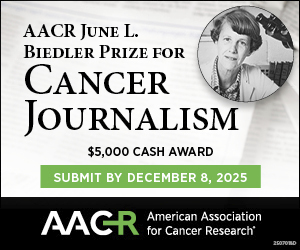This student story was published as part of the 2023 NASW Perlman Virtual Mentoring Program organized by the NASW Education Committee, providing science journalism practice and experience for undergraduate and graduate students.
Story by Joe McMillan
Mentored and edited by Bethany Brookshire
Brains are trashy places. Foul thoughts aside, our brain cells are constantly at work, taking nutrients, water and oxygen and turning them into proteins. In the process, they produce waste. In young brains, cells neatly dispose of this garbage. But scientists always assumed that as animals get older, their brains would begin to get lazy about trash day. If brain cells struggled to take out their trash, they reasoned, consequences could include diseases such as Alzheimer’s and dementia.
Old brains aren’t lying down on the job after all, a new study shows. Instead, they’re throwing out different trash. In a study published on June 5th in the journal Neuron, researchers cataloged every piece of garbage that young and old mouse brain cells threw away. They found very little difference in how much trash was discarded in the brains of young and old mice. Instead, the differences lay in what was thrown away.
As every cell uses nutrients, it produces waste. Cells bag up the trash through a process called autophagy, which means self-devouring. Once bagged up into cellular trash bags called autophagic vesicles, they fuse with small structures called lysosomes that are filled with acids and protein scissors. The chemicals act to break down components into their basic parts for recycling.
While autophagy is common to all cells in our body, it’s critical for brain neuronal cells. What makes neurons special is that these are largely the same cells we are born with. Most never get replaced. Their persistence is what allows us to form memories.
But that means that brain cells age and when they do, they can end up with built-up waste products. So some scientists assumed that older cells must be bad at getting rid of garbage. But not all scientists agreed. “There are dogmas in the field: As you age, autophagy decreases,” explained Vassiliki Nikoletopoulou, a neuroscientist at the University of Lausanne in Switzerland. “Much of this [dogma] was influenced by research on invertebrates and I was disappointed with the previous evidence.” She was curious to identify and catalog brain trash in mice instead.
Nikoletopoulou and colleagues collected the autophagic vesicles containing the waste from young and old mouse brains and systematically identified all of the protein trash inside. With their trash catalogs in hand, the scientists interpreted the data using special software to trace where in the brain the trash came from and what functions the trash had before being tossed out.
To their surprise, they found very little difference in the mass of the autophagic vesicles between the adolescent, adult and aged mice. They were all getting rid of similar amounts of trash. But when they compared the content of the adolescent mouse brains to adult and old mice, they found that younger mice were getting rid of more mitochondrial debris. In contrast, older mice were tossing out more proteins from synapses, which are the connections neurons make with each other to communicate.
Young mouse brain cells, like young human brain cells, grow very fast and sprout many synapses. This process requires abundant energy produced by mitochondria. Young mouse brain cells have lots of them, and trash or recycle mitochondria that are past their prime. In older mice, the synapses that already exist require maintenance—and that work produced more of the trash.
“The data reported is strong for the field,” said Erika Holzbaur, a cell biologist at the University of Pennsylvania in Philadelphia. Now scientists will know how cell trash changes as brains age, which could help them identify disease-related waste, and give them new clues about the causes of diseases such as Alzheimer’s. Ultimately, one cell’s trash can be a scientist’s treasure.
Joe McMillan is a 4th year PhD student studying neuroscience at the University of South Florida. He can be found in the lab uncovering the protein interactome in mouse models of Alzheimer’s disease. Follow him on LinkedIn or email him at jdmcmi02@gmail.com.
The NASW Perlman Virtual Mentoring program is named for longtime science writer and past NASW President David Perlman. Dave, who died in 2020 at the age of 101 only three years after his retirement from the San Francisco Chronicle, was a mentor to countless members of the science writing community and always made time for kind and supportive words, especially for early career writers. Contact NASW Education Committee Co-Chairs Czerne Reid and Ashley Yeager and Perlman Program Coordinator Courtney Gorman at mentor@nasw.org. Thank you to the many NASW member volunteers who spearhead our #SciWriStudent programming year after year.
Founded in 1934 with a mission to fight for the free flow of science news, NASW is an organization of ~ 2,600 professional journalists, authors, editors, producers, public information officers, students and people who write and produce material intended to inform the public about science, health, engineering, and technology. To learn more, visit www.nasw.org



